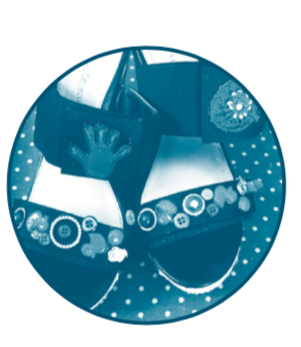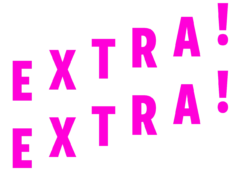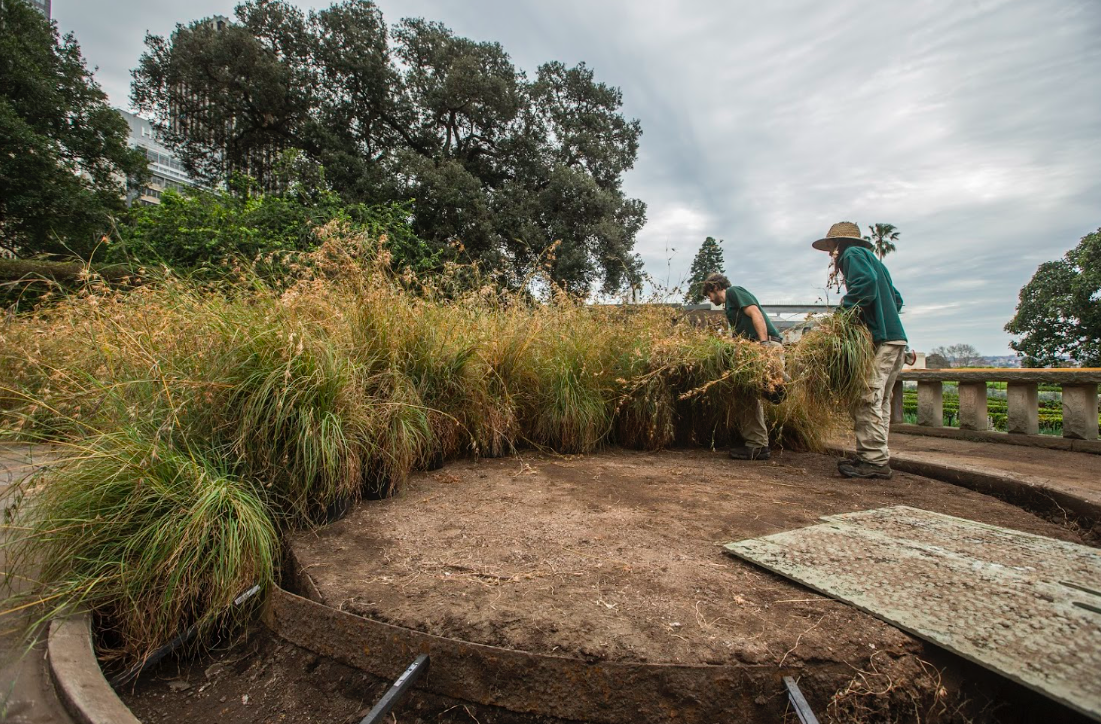by Juundaal Strang Yettica

“I don’t know much about much but the learning keeps me alive!”
The edited audio interview with Jonathan Jones will be here soon!
Image credit: Kaldor Public Art Project 32: Jonathan Jones Kangaroo grassland, barrangal dyara (skin and bones), Royal Botanic Garden, Sydney, 17 September – 3 October 2016 © Jonathan Jones. Photo: Pedro Greig
Hello! There you are! I’ve been waiting for you! Come in, come with me…
By no means am I any kind of expert about anything and sometimes I’m not even sure yet what there is in front of me to learn but I go in anyway, with or without a map…and most times I end up at a completely different place than I thought I was headed! Please let me try to explain this better… When we first met, yes, you and I, I had hoped to give you something. I hoped to leave you with something, an idea, a new question to ask, a memory or a seed planted. I have since come to understand that I don’t have to be an expert. People are willing and wanting to share their knowledge and experience so we can all learn and for this I am grateful. So, shall we go in?
Have you ever sat with an artwork and thought, I get some of it… but I know there’s more? You say to yourself; it’s trying to tell me more… there are more layers and deeper levels here… Have you ever wished you could ask an artist those questions that keep running through your mind? Well folks, this week I have had the privilege of such an opportunity, and I’d like to share it with you… Come with me, let’s go sit with Jonathan Jones’ barrangal dyara (skin and bones) (2016) again. barrangal dyara (skin and bones) hasn’t left my thoughts all week. It has raised for me more questions about the layers – and those layers don’t seem to want to let me go.So, through my involvement with EXTRA!EXTRA! I took the opportunity to email Jonathan Jones some questions about his work, and his thoughts on some of the topics we’ve been talking about: respect for Country and traditional Custodians, artistic accountabilities and collaborating. I thought of it as an electronic cup of tea… a cup I’d like to share with you.
As I listened, re-listened and traced through the recording Jonathan made, I noticed that deep respect is woven through all his words, no matter what the topic. Respect seems to be at the core of everything. It’s apparent in the way he speaks about his relationships with Country, Elders, and Community. From collaborators to local people, traditional Owners, their stories, memories and histories and how to best represent them. I could hear respect, for his use of materials, making processes and the responsibility of his role as an artist. All of this is the foundation of his practice.
Now, hearing his words arrange themselves into beliefs and principles, to my way of hearing things folks, this is no ordinary explanation of what it is respectful art practice because…echoing around me, I remember my Mother teaching similar things to me. Respect your Elders, listen to your Elders and look after them. She’d say things like, be grateful for what you have and if you have something, share it, don’t let others go without. In the recording Jonathan says he deliberately wants to:
“Ensure the benefits of an art project aren’t just for the artist. Art and cultural practices need to lift everyone and not just benefit one or two. By pooling our knowledges we can create benefits for the entire community and grow together.”
These ideas resonate strongly within me personally.
The further into Jonathan Jones’ recording I went and the longer I sat with barrangal dyara (skin and bones), I felt the immaturity of my questions being unknotted and given back to me in a weaving, that I experienced more as feelings and memories. It seems to me that Jonathan Jones’ in his art practice walks ancient connected paths, deeply trodden, reclaimed and brought back to our modern world for healing the future before it’s measured on a calendar. That’s when it finally dawned on me – he isn’t using new words, new ideas, new principles or even new philosophies, but old ones. Very, very old ones…
Hmmm… so folks, where to from here? I’ve hardly begun to share with you, before I am drawn to stop…you decide from here because I don’t know if I’m explaining myself properly, but I do hope two things. Firstly, that I have been respectful and grateful for what was shared with me and what I have learned. Secondly, that you might take your responsibility in hand and listen carefully to the layers and the layers of meaning inside Jonathan’s words. The invitation is there for everyone and I kind of believe that, if I can hear my Mother in them, then most certainly I am listening to my Grandmother, perhaps as she listened to hers… and this then is, the deepest collaboration I could ever hope for but never imagined.
Let me step a little outside myself for a moment and attempt to unfurl what I think I understand. barrangal dyara (skin and bones) the artwork is a conduit for local Indigenous voices, histories, knowledges and Custodianship. In part it is a signpost of Indigenous cultural resilience and revitalisation of Indigenous philosophies and knowledges. By undertaking and following traditional pathways and learning practices in producing the work, in effect all those involved have created it.
Here’s how I understand it. Jonathan Jones’ and those with whom he collaborates undertake these traditional pathways and practices such as listening and learning from Elders about Country, local people, their histories, memories, repatriations and sharing knowledge. In doing so they are simultaneously revitalising and activating Indigenous culture and philosophies in the 21st Century. Now folks, bear with me while I think this through further… if I can hear my Grandmother, through my Mother, my memory and Jonathan’s creative processes and the work, then is what I am feeling, thinking and doing, my Indigenous ontological and epistemological understandings of time, the world before me, around me and within me, in the here and now?
I leave you with this question: regardless of what century we tell ourselves we are in and all the things we’ve met about today… is Indigenous art a form of philosophy, or an expression of it?
It seems, I am the one who has been given something…
Some of the readings that have been helpful in my thinking:
Shawn Wilson, Research Is Ceremony: Indigenous Research Methods, Fernwood Publishing, 2008.
Zoe Todd, “Indigenizing the Anthropocene”, in Art in the Anthropocene: Encounters Among Aesthetics, Politics, Environment and Epistemology, edited by Heather Davis and Etienne Turpin, Open Humanities Press, 2015.
I want to give my gratitude and respect to the Gadigal People of the Eora Nation, and to Jodi Edwards, Nathan Sentance, Jonathan Jones, Antonia Fredman, Wendy Bacon and the Kat-in-the-Hat, for their guidance and support for this little project. I also want to thank all of you before we say goodbye, I wish you well and I wish you many more questions to come.

